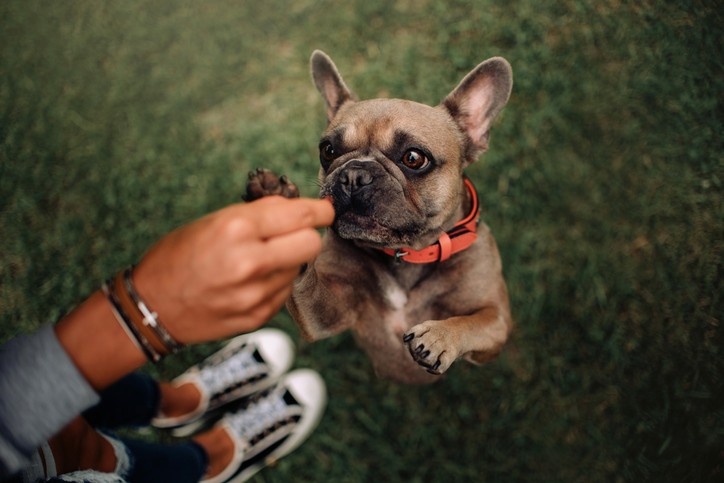
Here are 6 Simple Tips to Help with Dog Training
If you have a dog, you might already be aware of how challenging training can be. And if you’re thinking of adopting a dog or bringing home a new puppy, you may be doing some research to help you prepare for the inevitably difficult process of training your new pet.
In this article, we’ll give you a few tips to help make it a bit easier to train your dog. Although dog training is always somewhat of a challenge, it doesn’t have to be impossible. Use these tips to help you prepare for the training experience and learn how to set yourself and your dog up for success.
1. Start Slow
First and foremost, make sure you start slowly with your dog. If you’re training a new puppy, you’ll need to start with potty training, so this is a great slow beginning to the process. If your dog is already housebroken, you can start with a simple command like “sit” and work up from there.
Don’t expect your dog to suddenly know how to “roll over” or perform another more complicated trick or command without starting with the basics first. By creating a solid foundation of simple basic commands, you’re giving your dog plenty of success to build upon in her future training as well.
2. Learn One Command at a Time
Although it can be tempting to try to teach your dog multiple commands in one setting, it’s best to focus on one command at a time. Once your dog has gotten the hang of the first command, you can then start adding more and more.
Remember, too, to always revisit previous commands with your pet. This way, they will remain fresh in her mind and will become part of her normal, everyday behavior. Reminding her of her commands throughout her training is a great way to build on past commands with new skills, too.
3. Train On-Leash
Especially when you’re just starting out or if you’re training a puppy, it’s a good idea to train on-leash. This way, you can signal to your dog that it’s time to focus and listen, not to play. Training on-leash also makes it easier for you to keep an eye on your dog and prevent her from running off to do something else in the middle of the training session.
You can use a long leash if you want to give your dog plenty of room to roam while training, or you can stick to a shorter leash if you want more control over her during the training.
4. Use Positive Reinforcement
Make sure you’re always using positive reinforcement instead of negative. You should never hit your dog or punish her for not listening to your commands; instead, reward her when she does listen and performs the commands you’re asking of her.
Food-motivated dogs can be rewarded with a treat every time they get a command right. Make sure you also shower your dog in praise for getting commands correct. Over time, you can start removing the treat from the equation and just verbally praising or petting your dog for performing her commands correctly.
5. Take Breaks as Needed
You and your dog both are going to need breaks throughout the training experience, and that’s okay. It’s important to give yourself and your pet breaks as often as needed and don’t overdo it. Otherwise, you risk both of you becoming frustrated and being unable to work well together.
It’s best not to train for more than fifteen minutes at a time, especially at first. Your dog doesn’t have a very long attention span, and training longer than this can lead to missed commands or purposeful ignoring of those commands. This behavior, in turn, can become frustrating to you, and you might become angry or overwhelmed yourself.
6. Train in Different Environments
Once your dog has mastered a few of the basic commands, such as sit and lay down, you should start practicing these commands in different environments. It’s easy for dogs to perform commands at home, but in a situation where they’re distracted by noises or other dogs, it can be much trickier. Mastering commands in different environments is crucial to the training process.
Achieving Successful Dog Training
As you can see, there are a lot of important tips to keep in mind when you’re just starting out training your dog. It may take some time for you and your dog to get into a groove of training, but with enough patience and practice, the two of you should become a successful training team in no time.
If you still have issues and difficulties training your dog after trying the suggestions mentioned here, talk to your veterinarian or a professional trainer for more information. Working with a professional can help you and your dog better understand the training process from start to finish.